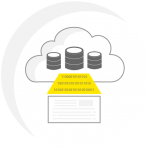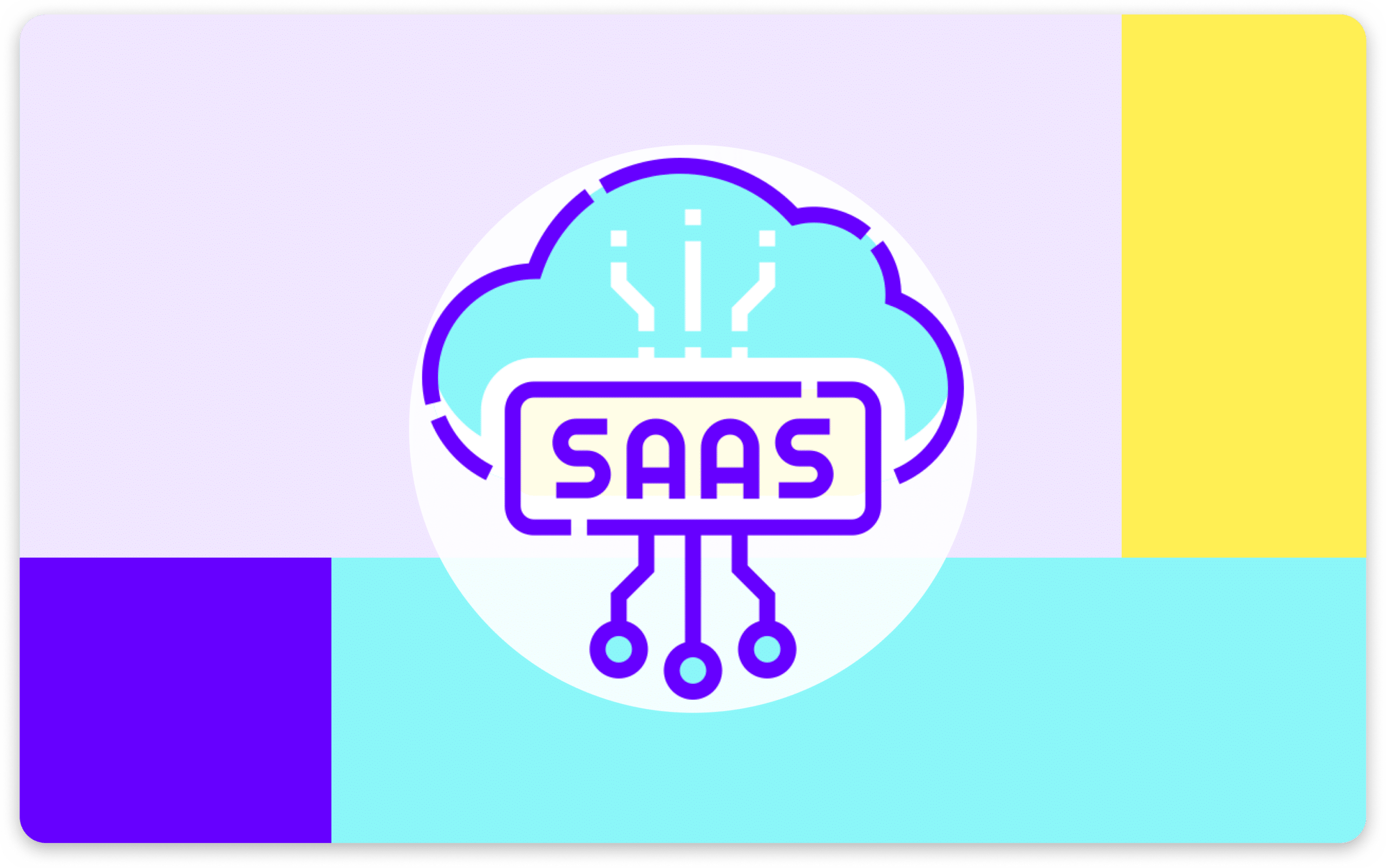Tiempo estimado de lectura: 6 Minutos
Seguramente te has preguntado sobre Software cómo servicio (SaaS) ¿Qué es y cuáles son sus ventajas?
En nuestra actualidad, donde palabras como transformación digital e industrias 4.0 son pan de cada día. Las personas empiezan a estar familiarizadas o querer conocer sobre las diferentes formas en que sus empresas pueden hacer uso de estas tecnologías.
Una familia importante a conocer y utilizar son las tecnologías como servicio: infraestructura (IaaS), plataforma (PaaS), desktop (DaaS), datacenter (DCaaS) y por supuesto, Software (SaaS).
Qué es SaaS?
El software como servicio o SaaS por su abreviatura en inglés, es un tipo de licenciamiento y entrega de software. En tu computador usualmente tienes una aplicación (software) específica que usas, antes este software siempre se instalaba en un servidor local de tu compañía y se configuraban servicios web para acceder a este servidor y poner a andar tu aplicación en tu computador. Ahora, la diferencia esta en que en SaaS se usa el internet para que tengas acceso a este software.
No todo lo que es suscribción es SaaS, únicamente lo que te entregue una herramienta que se entrega a través de una interfaz web o una aplicación móvil. Es nuevo porque antes debían comprarse los servidores físicos e instalarlos localmente para que funcionará.
El cliente comúnmente paga por su uso a través de suscripciones mensuales y/o anuales, las cuales le permiten hacer uso de este software y su soporte, mientras dicha suscripción esté vigente.
Normalmente, los software ofrecidos como servicio están apoyados y soportados por infraestructura en la nube, por lo cual para acceder a ellos solo se requiere una conexión a internet y hacer uso de su navegador.
Porqué preferir el Software como Servicio (SaaS)?
El software como servicio tiene tanto para los consumidores finales, como para las organizaciones, grandes ventajas frente a los adquiridos y usados en la forma tradicional. Es decir, instalados en la propia infraestructura del cliente y con pago perpetuo por su uso. A continuación te presentamos 9 razones por las que se prefiere el uso y las ventajas del SaaS:
1. OPEX vs CAPEX:
Al tener un modelo de negocio que se considera como una renta, su pago se convierte en un gasto operativo (OPEX) y no en un en gasto de capital (CAPEX), lo cual permite que sean totalmente deducibles de impuestos en el año que se hace su uso y pago y nos e causan depreciaciones. Usas la herramienta para entregarle valor a tu compañía, lo cuál se convierte en gastos operativos y permiten ser más eficientes en deducción de impuestos.
2. VALOR DEL DINERO
En vez de tener miles de dólares para invertir en servidores, licenciamiento de sistemas operativos, configuraciones de software, se puede pagar un valor menor cada mes para y no debo gastar una montaña de dinero hoy, haciendo más eficiente el capital de trabajo de la compañia. Esto permite que los valores mensuales o anuales que se pagan por el uso del software sean cada vez más bajos y flexibles para los clientes que hacen uso de los mismos.
3. MASIFICACIÓN EN SU USO:
Debido a la tecnología que se maneja, las soluciones SaaS tienen unos costos significativamente menores vs los desarrollos tradicionales. Por lo que permiten a las pequeñas y medianas empresas acceder a tecnología robusta sin realizar grandes inversiones de dinero ni equipos especializados para hacerlo.
4. TIEMPOS DE IMPLEMENTACIÓN:
Los tiempos de implementación del software como servicio son muchísimo menores que el software tradicional, ya que normalmente están listos para ser usados por el cliente hoy mismo, incluyendo la infraestructura física que los soporta. No requieren hacer compras de infraestructura, esperar tiempos de importación, ni instalaciones de hardware, software y configuraciones adicionales. Aunque en algunos casos se requiere de tiempos de parametrización o personalización del software para cada uno de los clientes, este nunca será tan largo como el de desarrollar o instalar un software a la medida desde cero en tu propia empresa.
Asimismo, reduces el riesgo de qué el proyecto no de los resultados esperados, de que no sea exitoso, ya que al comprar servidores, instalarlos, configurar la solución y demorar un largo tiempo implementándolo obliga a que respondas por el éxito o fracaso del proyecto. Al contratar un SaaS la responsabilidad es del proveedor, ya que si la implementación no es simple, no sea fácil de usar usar y no se obtiene el valor esperado, puedes detener la suscripción y buscar alguien que ofrezca una solución similar sin la inversión significativa inicial haciendo una implementación interna.
5. MANTENIMIENTO, ACTUALIZACIONES Y NUEVAS VERSIONES:
En las soluciones SaaS los costos y labores de mantenimiento son asumidas en su totalidad por el proveedor de la solución. Ofreciendo no solo una reducción en costos de estas actividades versus si tuvieras que realizarlas en tu propia empresa, con tu propia infraestructura y personal. Sino que te garantizan alta disponibilidad, en su versión estable y funcional para que tú simplemente las uses.
Asimismo, en la modalidad de software como servicio, sus fabricantes constantemente están realizando mejoras, actualizaciones y liberando nuevas versiones, las cuales están incluidas en el valor de la suscripción. Esto genera menos costos, tiempos de indisponibilidad y recursos humanos que el modelo tradicional, en el cual usualmente se deben comprar paquetes de actualización, instalarlos y tener o pagar servicios especializados para hacerlos.

6. ESCALABILIDAD E INTEGRACIÓN:
Dado el ambiente en nube que soportan las soluciones SaaS, es posible que estas crezcan en su capacidad dinamicamente únicamente cuando se requiere. Haciendo uso de recursos cada vez mejores y optimizados, ofrecidos por los proveedores en nube. Asimismo, se pueden integrar con otros software o aplicaciones de forma más rápida que cuando se realiza en infraestructuras on-premise.
7. DISMINUCIÓN DE RIESGOS DE ADQUISICIÓN:
Cuando se hacen uso de soluciones SaaS, se elimina el riesgo de adquisición y depreciación del software, ya que si el cliente no está satisfecho con la solución en muchos casos puede pedir la devolución de su dinero o simplemente cancelar la suscripción y no hacer más uso de la misma. Asimismo, si se requieren cambios en los planes del software que se están manejan estos son permitidos, haciendo que la empresa pueda ampliar o disminuir capacidad, según sus necesidades y situaciones puntuales.
8.DISMINUCIÓN DE TIEMPO EN CURVAS DE APRENDIZAJE:
SaaS tienden a tener una curva más baja de aprendizaje que los software tradicionales, haciendo que la adopción dentro de los equipos del cliente sea mucho más fácil. De igual manera, el hecho que las soluciones puedan usarse de forma más rápida y sin implicar desarrollos o implementaciones por parte de los equipos de trabajo, hace que las empresas puedan enfocarse en su core de negocio y no se distraigan en actividades de soporte que disminuyen su concentración y productividad.
9. FACILIDAD DE USO
Como ya lo habíamos mencionado antes, las soluciones SaaS normalmente son soluciones llave en mano, lo que permite que el cliente únicamente tenga que acceder a ellas para usarlas haciendo uso de una conexión a Internet. Adicionalmente, con la finalidad que esta facilidad se mantenga, los diferentes proveedores hacen uso de las mejores prácticas para su desarrollo, garantizando el uso de los estándares de la industria y actualización de los mismos, en sus nuevas versiones o actualizaciones.
Esperamos que te animes a conocer mucho más sobre las soluciones como servicio, y sobretodo a probarlas. Hay infinidades de aplicaciones y soluciones en esta modalidad, listas para que las uses dentro de tu empresa y aproveches sus beneficios.
Te invitamos a conocer nuestras soluciones en Cadena de Abastecimiento, si tienes alguna inquietud o quieres conocer más a fondo como ¡Transformamos datos en ahorro! no dudes en contactarnos.
